Essential Guide to Auto Rickshaw Repairs
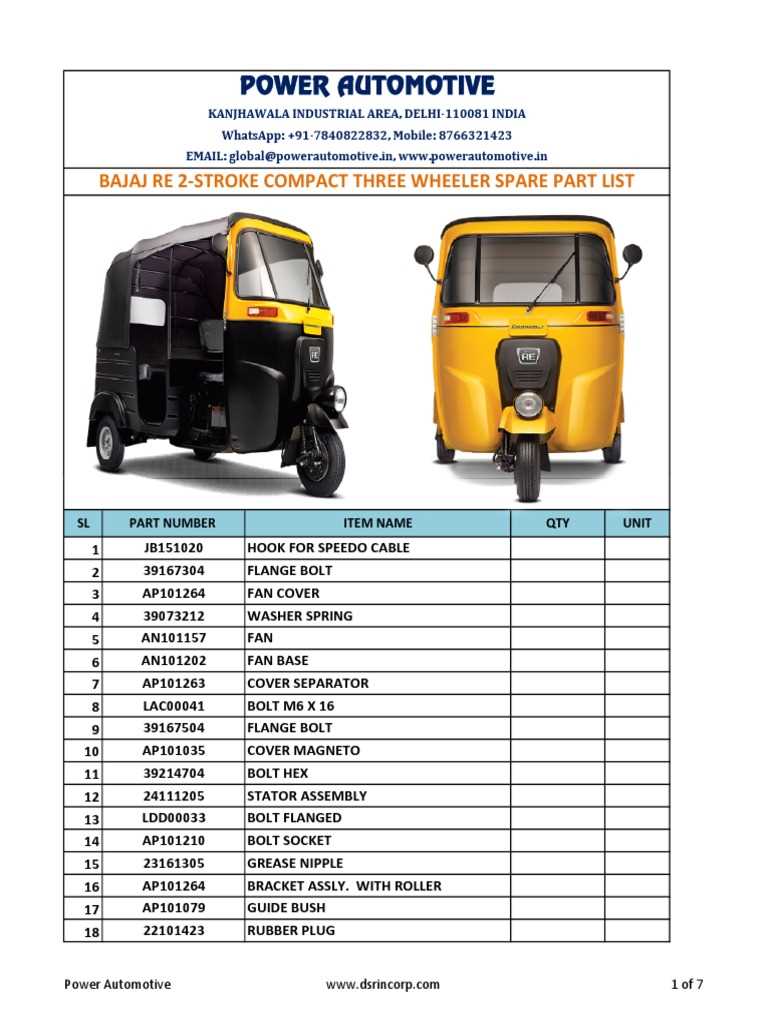
Three-wheeled vehicles serve as a vital mode of transportation in many regions, combining efficiency and agility for urban commuting. Understanding the intricacies of these machines is essential for ensuring their longevity and optimal performance. This guide aims to equip owners with the knowledge needed to troubleshoot common issues and conduct essential upkeep.
From engine adjustments to electrical system checks, each component plays a significant role in the overall functionality. Regular attention to these aspects not only enhances performance but also contributes to safety on the road. By familiarizing yourself with basic procedures and techniques, you can effectively address minor faults before they escalate into major problems.
In the following sections, we will explore various strategies and tips that empower users to take charge of their vehicle’s condition. Whether you’re a novice or have some experience, this comprehensive resource will help you navigate through maintenance tasks with confidence.
Understanding Auto Rickshaw Components
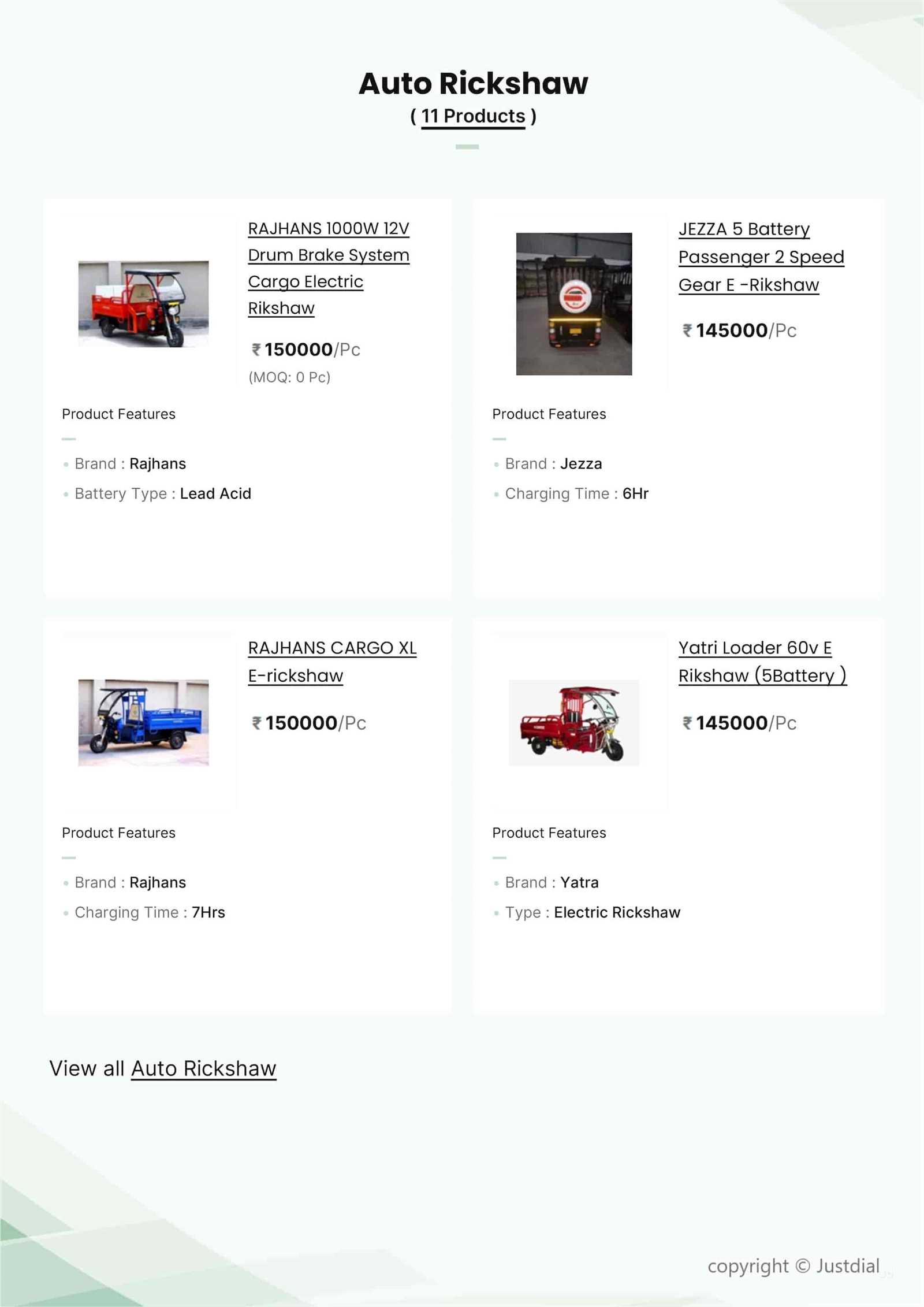
Familiarity with the essential parts of three-wheeled vehicles is crucial for efficient maintenance and optimal performance. Each component plays a vital role in ensuring smooth operation and overall safety. By recognizing the function and importance of these elements, one can better troubleshoot issues and enhance the longevity of the vehicle.
The following table outlines key components commonly found in three-wheeled vehicles, along with their primary functions:
| Component | Function |
|---|---|
| Engine | Provides power and propulsion for the vehicle. |
| Transmission | Transmits power from the engine to the wheels, enabling movement. |
| Chassis | Serves as the structural framework, supporting various components. |
| Suspension System | Ensures a smooth ride by absorbing shocks from uneven surfaces. |
| Brakes | Allows the operator to slow down or stop the vehicle safely. |
| Wheels | Facilitates movement and supports the vehicle’s weight. |
| Electrical System | Powers lights, indicators, and other electronic components. |
| Fuel System | Delivers fuel to the engine for combustion and power generation. |
Understanding these components helps in identifying potential issues and effectively maintaining the vehicle. Each part works in harmony with the others, contributing to the overall functionality and efficiency of the unit.
Common Issues Faced by Drivers
Operating a three-wheeled vehicle comes with its own set of challenges that can impact performance and safety. Understanding these prevalent problems can help operators address them effectively and maintain smooth functioning.
Mechanical Failures
One of the most frequent concerns involves mechanical breakdowns. These can range from engine issues to transmission problems. Drivers often encounter symptoms such as unusual noises, vibrations, or a decrease in power. Regular maintenance is essential to minimize the risk of such failures.
Fuel Efficiency and Consumption
Another significant issue is related to fuel usage. Many drivers report unexpected increases in fuel consumption, which can strain finances. Factors contributing to this may include poor engine tuning, tire pressure discrepancies, or overloaded vehicles. Keeping an eye on these elements can lead to better efficiency and savings in the long run.
Essential Tools for Repairs
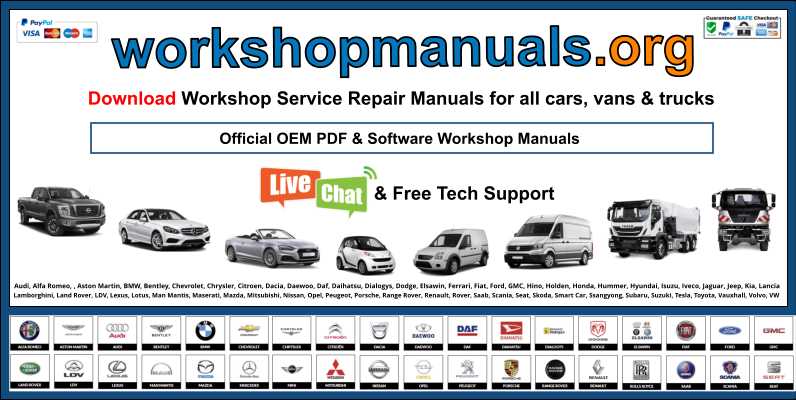
Having the right set of instruments is crucial for effective maintenance and fixing tasks. Each component plays a significant role in ensuring that the vehicle operates smoothly and efficiently. Below are the fundamental items that every mechanic should consider incorporating into their toolkit.
- Wrenches: These are vital for loosening and tightening various bolts and nuts.
- Screwdrivers: A selection of flathead and Phillips screwdrivers is necessary for handling different types of screws.
- Pliers: Useful for gripping, twisting, and cutting wires or small components.
- Jack: Essential for lifting the vehicle to access the undercarriage or change tires.
- Multimeter: This tool helps diagnose electrical issues by measuring voltage, current, and resistance.
Each of these tools serves a distinct purpose, contributing to the overall functionality and longevity of the vehicle. It is advisable to regularly check and maintain these instruments to ensure they are always ready for use.
- Regularly inspect tools for wear and tear.
- Keep them organized for quick access.
- Invest in high-quality items to ensure durability.
By equipping oneself with these essential instruments, one can tackle a wide range of issues that may arise, promoting a reliable and efficient mode of transport.
Step-by-Step Maintenance Guide
Proper upkeep of your vehicle is essential for ensuring its longevity and optimal performance. This guide provides a systematic approach to routine care, addressing key areas that require attention and offering practical tips for effective management. By following these steps, you can maintain reliability and enhance the efficiency of your transportation.
1. Regular Inspections: Begin with periodic checks of vital components such as brakes, lights, and tires. This helps in identifying issues before they escalate. Ensure all lights are functioning correctly, and tires are inflated to the recommended pressure.
2. Engine Maintenance: Keep the engine in top condition by checking oil levels regularly. Replace the oil and oil filter as recommended in the vehicle’s specifications. A clean engine runs smoother and is more fuel-efficient.
3. Cooling System Check: The cooling system plays a crucial role in preventing overheating. Regularly inspect the coolant levels and check for leaks in hoses or the radiator. Ensure the coolant is topped up and in good condition.
4. Battery Care: A well-maintained battery is vital for reliable starts. Clean terminals and ensure connections are secure. Check the charge regularly and replace the battery if it shows signs of wear.
5. Transmission Maintenance: Fluid levels in the transmission should be checked frequently. Change the fluid as per the manufacturer’s recommendations to ensure smooth shifting and prevent damage.
6. Tire Maintenance: Regularly inspect tire tread for wear and rotate them to ensure even wear. This not only prolongs the life of the tires but also enhances fuel efficiency and safety.
7. Cleaning: Keep the exterior and interior clean to prevent rust and maintain aesthetic appeal. Regular washing and waxing can protect the paint, while interior cleaning improves comfort for passengers.
Following this structured approach to maintenance will help in maximizing the lifespan and performance of your vehicle, ensuring it remains a reliable means of transport for years to come.
Electrical System Troubleshooting Tips
When faced with issues in the electrical framework of a vehicle, identifying the root cause can be a complex process. This section provides valuable insights and strategies for effectively diagnosing common electrical problems. By following these guidelines, you can enhance your troubleshooting skills and ensure reliable performance.
Common Symptoms and Their Causes
- Dim Lights: This may indicate a weak battery or faulty alternator.
- Electrical Shorts: Check for damaged wires or loose connections that could be causing unexpected behavior.
- Non-Functioning Components: Assess switches and fuses, as these are often the culprits when certain features fail to operate.
Diagnostic Steps to Follow
- Begin with a visual inspection of all wiring and connectors.
- Utilize a multimeter to measure voltage levels at key points.
- Test individual components, such as the starter motor and ignition system, for proper functionality.
- Refer to circuit diagrams to trace any anomalies in the electrical flow.
By systematically approaching these troubleshooting techniques, you can efficiently address electrical issues, ensuring optimal functionality and longevity of the vehicle’s electrical systems.
Engine Overhaul Procedures Explained
This section delves into the essential steps required for the comprehensive refurbishment of a vehicle’s power unit. The objective is to restore optimal performance and longevity by addressing various components that may exhibit wear or damage over time.
Preparation Steps
Before commencing the disassembly, ensure you have the appropriate tools and a clean workspace. Begin by disconnecting the battery and draining the fluids to prevent spills and ensure safety. Documenting the assembly process with photographs can aid reassembly.
Disassembly and Inspection
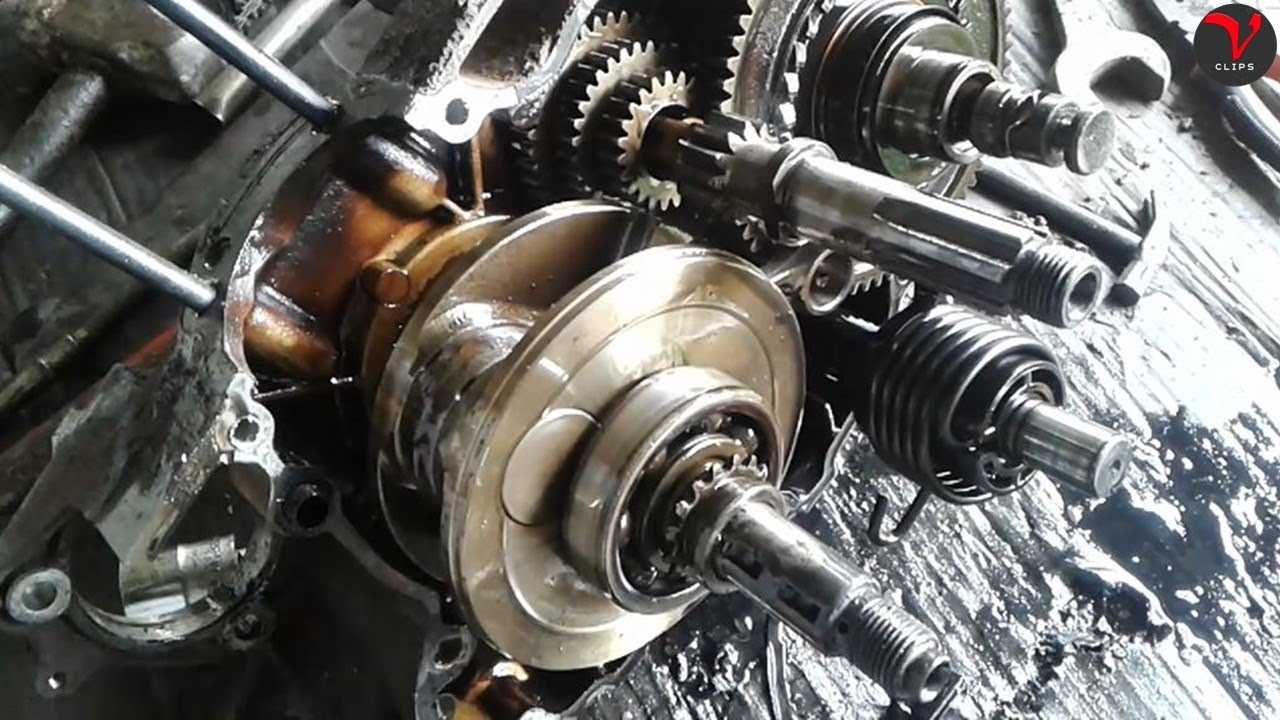
Carefully remove the engine from its housing and proceed with the disassembly of various components. Each part should be inspected for signs of wear, including the cylinders, pistons, and gaskets. Any damaged parts should be noted for replacement.
| Component | Inspection Criteria | Action Required |
|---|---|---|
| Cylinders | Scoring, pitting | Rebore or replace |
| Pistons | Cracks, wear | Replace |
| Gaskets | Leaks, deterioration | Replace |
After completing the inspection and noting necessary replacements, the next steps involve cleaning and preparing each component for reassembly, ensuring a reliable and efficient operation once reinstalled.
Braking System Inspection Techniques
The efficiency of a vehicle’s stopping mechanism is crucial for safety and performance. Regular evaluation of this system is necessary to ensure reliability and functionality. Proper inspection techniques help identify potential issues before they escalate, allowing for timely interventions.
Visual Checks
Begin with a thorough visual assessment. Examine the condition of the brake pads and discs for wear and tear. Look for any signs of fluid leaks around the brake lines and master cylinder. Ensure that all components are securely mounted and free from corrosion. This preliminary check can reveal obvious problems that need immediate attention.
Performance Testing
Next, conduct a performance evaluation. Test the responsiveness of the braking system by engaging the brakes at low speeds. Listen for unusual noises, such as squeaking or grinding, which may indicate issues with the pads or other components. Additionally, assess the vehicle’s stopping distance to ensure it meets safety standards. Any deviations from expected performance warrant further investigation.
Implementing these techniques regularly can significantly enhance the safety and longevity of the braking system.
Replacing Tires and Wheels Safely
Ensuring the proper replacement of tires and wheels is crucial for maintaining vehicle performance and safety. This task requires attention to detail and adherence to safety protocols to prevent accidents and equipment damage. A systematic approach not only enhances driving stability but also extends the lifespan of the components involved.
Preparation and Safety Measures
Before commencing the replacement process, it is essential to gather all necessary tools, including a jack, lug wrench, and tire pressure gauge. Ensure the vehicle is parked on a flat, stable surface, and engage the parking brake. Wearing appropriate safety gear, such as gloves and safety glasses, can further minimize risks. Always consult the manufacturer’s specifications for proper tire and wheel sizes.
Step-by-Step Replacement Process
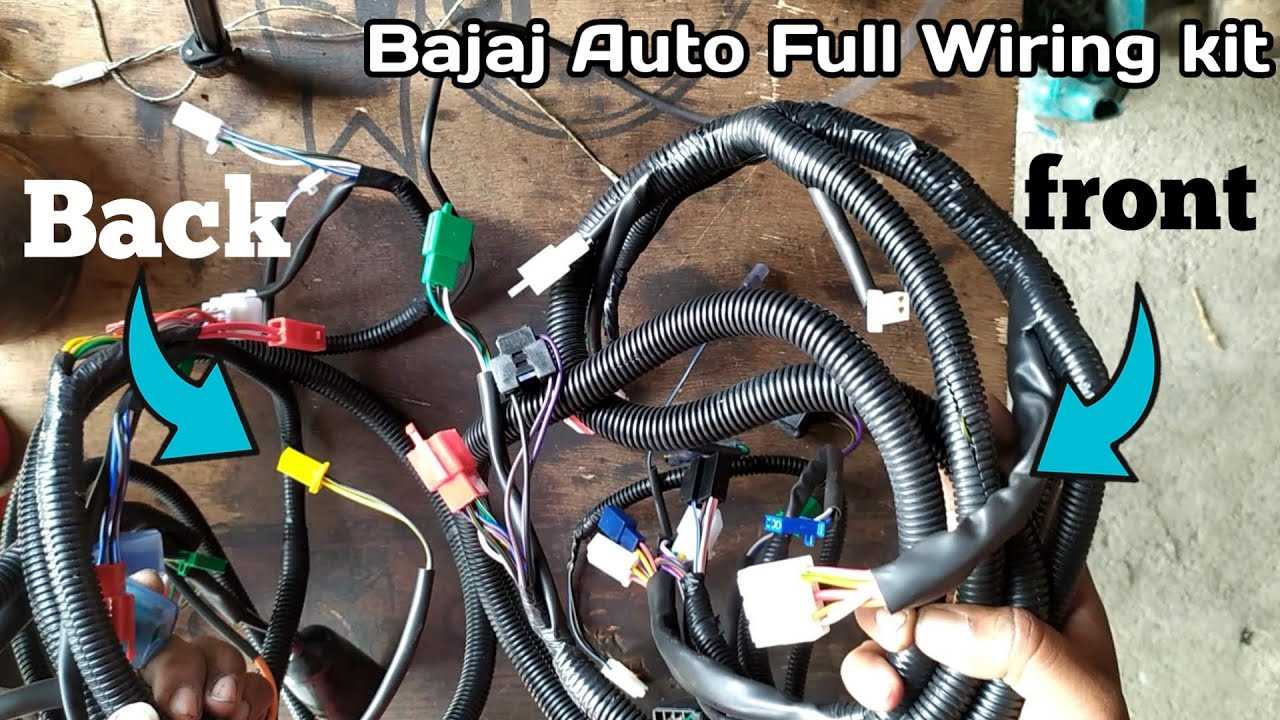
Begin by loosening the lug nuts slightly while the wheels are still on the ground. Then, use the jack to lift the vehicle until the tire is free from the ground. Remove the loosened lug nuts completely and carefully take off the tire. When installing the new tire, align it with the hub and hand-tighten the lug nuts. Lower the vehicle back to the ground and securely tighten the lug nuts in a crisscross pattern to ensure even distribution of pressure. Finally, check the tire pressure and make any necessary adjustments.
Upgrading Performance Features
Enhancing the capabilities of a compact vehicle can significantly improve its efficiency, handling, and overall driving experience. By focusing on key components, operators can achieve better performance and reliability, ensuring a smoother ride and increased longevity.
Key Areas for Improvement
- Engine Optimization: Upgrading engine components can lead to better power output and fuel efficiency.
- Suspension System: Improving the suspension can enhance stability and comfort, especially on rough terrains.
- Transmission Adjustments: Modifying the transmission can improve responsiveness and gear shifting.
- Weight Reduction: Utilizing lighter materials can enhance acceleration and reduce fuel consumption.
Performance Enhancement Techniques

- ECU Remapping: Reprogramming the engine control unit can unlock additional horsepower and torque.
- Air Intake and Exhaust Upgrades: Installing high-performance air filters and exhaust systems can improve airflow, leading to enhanced engine performance.
- Tire Selection: Choosing appropriate tires can provide better traction and handling.
- Regular Maintenance: Keeping components in top condition through regular checks and servicing is crucial for optimal performance.
Safety Precautions During Repairs
Ensuring a secure environment while addressing vehicle issues is paramount. Proper measures can significantly reduce the risk of accidents and injuries. Understanding the importance of safety can help create a more effective workspace.
Always wear protective gear, such as gloves and safety glasses, to shield against debris and chemicals. This simple step can prevent injuries that may arise during maintenance tasks.
Ensure proper ventilation in the area where you are working. Fumes from fuels and lubricants can be harmful, so it’s vital to have adequate airflow to mitigate any potential health risks.
Use appropriate tools for the job at hand. Utilizing the correct instruments not only enhances efficiency but also minimizes the chance of accidents caused by improper handling.
Keep your workspace organized and clutter-free. A tidy environment reduces the likelihood of tripping hazards and allows for quick access to tools and materials, which can be critical in emergencies.
Always disconnect the battery before beginning any electrical work. This practice ensures that you avoid unintentional shocks or short circuits that could lead to serious injuries.
By adhering to these guidelines, you can create a safer and more effective atmosphere when working on vehicles, ultimately leading to successful outcomes.